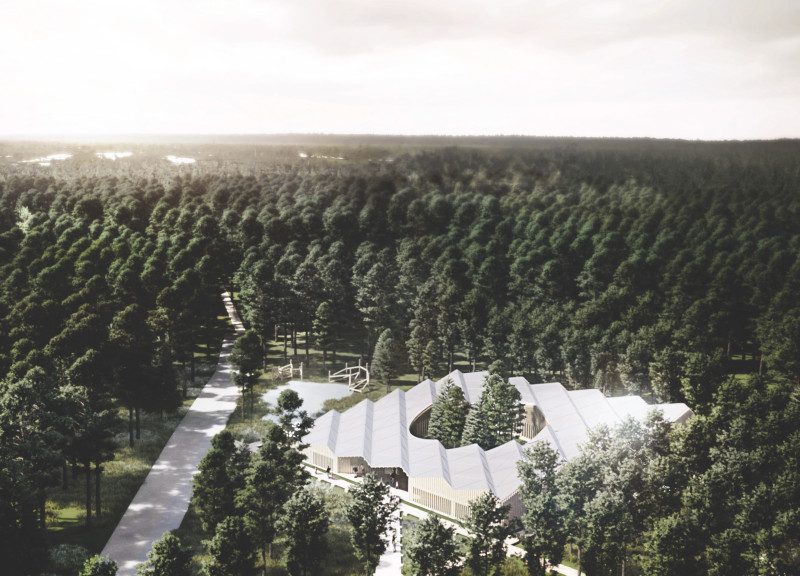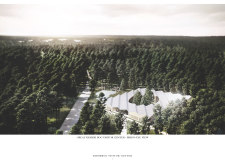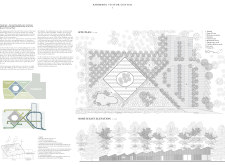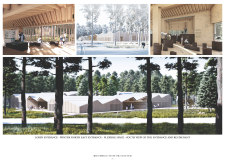5 key facts about this project
The design employs a geometric form characterized by sloping roofs that reflect the park's terrain. This architectural approach not only contributes to the visual identity of the structure but also facilitates natural rainwater management. Large glass panels occupy substantial portions of the façade, allowing for abundant natural light and unobstructed views of the landscape. This integration of outdoor and indoor spaces creates an immersive environment that encourages engagement with nature.
Sustainable design practices are central to the project, which utilizes local materials such as timber and stone. The selection of these materials is not only reflective of traditional Latvian architecture but also emphasizes sustainability by reducing transportation impacts. Additionally, the incorporation of renewable energy sources, such as solar panels, underlines the project's environmental commitment.
Unique Design Approaches
The architectural design of the Rhombog Visitor Center prioritizes ecological sensitivity while addressing functional needs. One notable aspect is the building's adaptive thermal performance, which allows it to naturally regulate indoor temperatures. This reduces reliance on mechanical heating and cooling systems, promoting energy efficiency.
Further distinguishing this project is its focus on educational programming. The layout includes exhibition spaces, classrooms, and multipurpose areas specifically designed to host workshops and guided tours. This multifunctional approach caters to a diverse audience, enhancing visitor engagement and promoting learning about local ecosystems.
The integration of walking paths around the Visitor Center extends the exploratory experience beyond its walls. Carefully curated landscaping complements the architecture, incorporating native plant species that restore and maintain local biodiversity. This thoughtful relationship between architecture and landscape showcases a commitment to creating a holistic visitor experience.
Visitor Engagement and Community Involvement
The project emphasizes community involvement and visitor engagement, often conducting workshops and educational sessions that utilize the facilities. The Visitor Center serves as a meeting point for guided nature walks, further strengthening its role as a hub for ecological education. The thoughtful design encourages interaction not only with the environment but with other visitors, fostering a sense of community.
For detailed insights into the architectural plans, architectural sections, and other architectural ideas embodied in the Rhombog Visitor Center, interested readers are encouraged to explore the project presentation further. This exploration will provide a comprehensive understanding of the innovative architectural designs that underpin this significant contribution to Latvia’s architectural landscape.


























